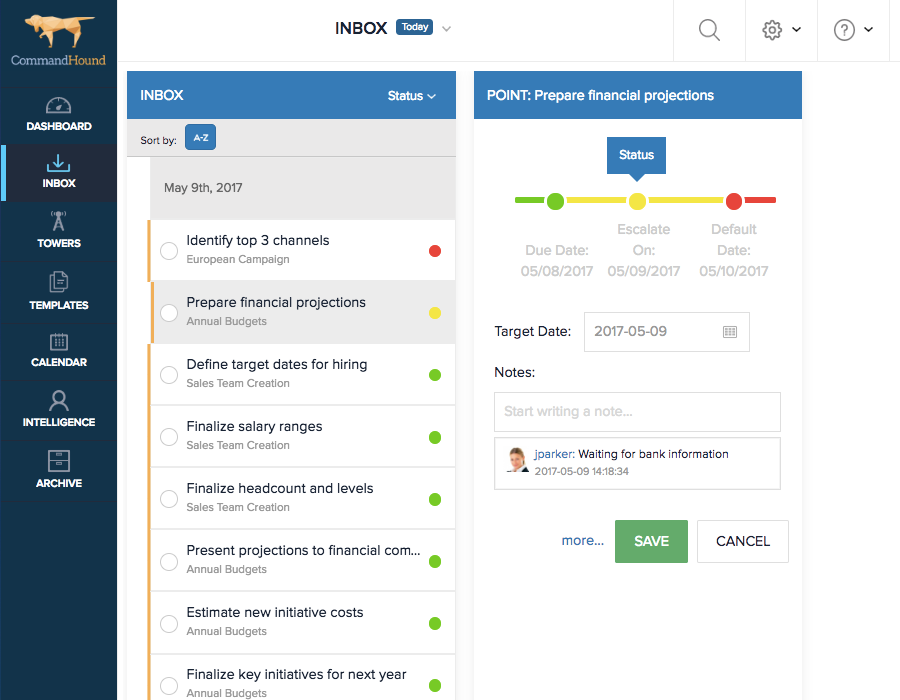How CommandHound Enhances Operational Systems to Drive Accountability
We often engage with our clients in the early stages of a CommandHound-driven accountability initiative to help them define how to best use CommandHound in conjunction with their existing operational systems.
 CommandHound Complements Operational Systems (e.g., CRM, ERP) to Drive Accountability
CommandHound Complements Operational Systems (e.g., CRM, ERP) to Drive AccountabilityApplication Layers
But how does CommandHound integrate with operational systems? This question is easily answered once we understand application layering. Simply put, CommandHound is an overarching application that focuses on tracking, reminding, escalating and reporting only on key milestones across all operational systems and business activities.
Once this is understood, the following 4 key concepts help make CommandHound even more effective in driving accountability in the workplace:
1. Level of Detail
Focusing on the tracking, escalation, and monitoring of milestones is where CommandHound should start. Focusing on what needs to be done rather than how helps keep things focused on what really matters.
For example, if you are tracking projects (e.g., tasks, dependencies, resources) in a full-featured project management system, CommandHound can provide the missing accountability link by tracking milestone completion performance at the individual level.
 Focusing on the What and not the How Helps CommandHound Complement Operational Systems
Focusing on the What and not the How Helps CommandHound Complement Operational Systems
When you let CommandHound monitor, escalate, and track performance at the individual level, you increase the likelihood that things will get done on time, as expected, by increasing transparency and personal accountability.
2. Binary Nature
CommandHound’s binary nature (i.e., is it done yet?) makes it a natural complement to operational systems such as CRM, ERPs, manufacturing, banking, and financial systems. When things are carried out in the operational system including all the accompanying documentation, CommandHound’s milestone can simply be marked as Completed when done for accountability purposes.
In essence, CommandHound provides a management-by-exception layer that is constantly monitoring the most important milestones in operational systems to alert and escalate on a timely basis to ensure that nothing falls through the cracks.
3. Escalation
With the availability of CommandHound’s escalation engine for critical tasks or milestones, deciding when and how to escalate needs to be defined.
Immediate escalation after a due date is past is a good way to highlight the importance of the due date itself. Using reminders before a due date, or before any escalation event, is good for complex milestones that require great effort to make sure due dates don’t sneak up when it is too late.
At the end of the day, escalation is all about bringing urgency to things so they are completed on time as expected.
4. Compensation
In order to put in place the final link in any accountability effort, we often work with clients to review and update compensation models so the right accountability-based behaviors are reinforced.
 Performance Tracking Tied to Compensation Drives Accountability
Performance Tracking Tied to Compensation Drives Accountability
In addition to tying information from operational systems together, a compensation model that also ties in milestone completion performance information from CommandHound helps to further drive a culture of accountability.
Next Steps
Would you like to know how CommandHound can complement your operational systems to drive and further support a culture of accountability in the workplace?
